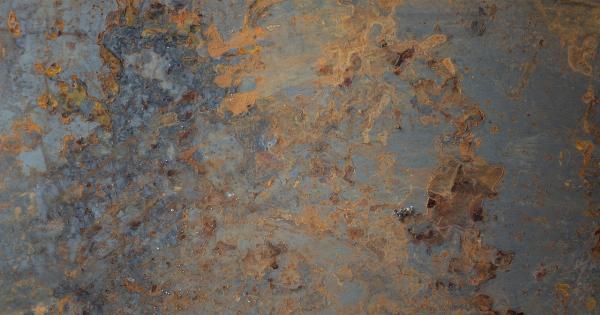Warts and breaks are two different skin conditions that can often be confused with each other due to their similar appearance. However, it is important to distinguish between them as their causes, treatments, and potential risks vary significantly.
In this article, we will cover the key differences between warts and breaks and offer insights on how to identify and manage them effectively.
What are Warts?
Warts are non-cancerous skin growths caused by the human papillomavirus (HPV). They usually appear as small, rough bumps on the skin surface and can occur on various body parts, including the hands, feet, face, and genital areas.
Warts can be contagious and are often transmitted through direct contact with an infected person or by touching surfaces contaminated with the virus.
Types of Warts
There are several types of warts that can manifest on the skin:.
- Common warts: These warts typically appear on the hands and fingers. They have a rough surface and may have black dots, which are actually clotted blood vessels.
- Plantar warts: Plantar warts develop on the soles of the feet and can be quite painful. They often present as hard, flat growths with well-defined boundaries.
- Flat warts: These warts are usually small and smooth. They can appear in large numbers, especially on the face, legs, and other shaved areas.
- Genital warts: Genital warts are sexually transmitted and occur on or around the genitals, anus, and groin. They can vary in size and may appear as clusters or single warts.
Symptoms of Warts
The signs and symptoms of warts may vary depending on the type and location. Generally, warts present the following characteristics:.
- A rough or grainy texture
- A raised or flat appearance
- Small, flesh-colored or white growths
- Black dots (common warts)
- Pain or tenderness (plantar warts)
- Clusters or cauliflower-like shape (genital warts)
What are Breaks?
Breaks, also known as fractals or fractures, refer to the breakage of a bone or any discontinuity in the integrity of a bone structure.
Unlike warts, breaks are not related to a viral infection but are typically caused by trauma, accidents, or underlying bone conditions such as osteoporosis or bone tumors.
Types of Breaks
There are several types of bone breaks, including:.
- Simple fracture: Also known as a closed fracture, a simple fracture occurs when the bone breaks but does not penetrate the skin.
- Compound fracture: Also known as an open fracture, a compound fracture refers to a break in the bone where it punctures or protrudes through the skin.
- Greenstick fracture: This type of fracture commonly occurs in children due to their relatively softer bones. It involves a partial break in the bone, causing a bend or crack instead of a complete separation.
- Comminuted fracture: A comminuted fracture occurs when the bone shatters into three or more pieces. This type of break is often the result of high force impact or severe trauma.
Symptoms of Breaks
The signs and symptoms of a bone break may vary depending on the severity and location of the fracture. However, common indicators include:.
- Intense pain and localized tenderness
- Swelling and bruising around the injured area
- Deformity or abnormal positioning of the affected bone
- Difficulty or inability to move the injured body part
- Visible bone protrusion (compound fracture)
- Crepitus (a grating sound or sensation upon moving the affected area)
Distinguishing Between Warts and Breaks
Given the differences in causes, characteristics, and symptoms, it is usually straightforward to distinguish between warts and breaks. However, in some cases, certain fractures that occur closer to the skin surface can lead to confusion.
Here are some key points to help differentiate between the two:.
- Appearance: Warts are small, flesh-colored or grainy growths, whereas breaks are characterized by pain, swelling, and deformity of the affected bone.
- Cause: Warts are caused by the HPV virus, while breaks are typically the result of physical trauma, accidents, or underlying bone conditions.
- Origination: Warts occur on the skin surface, whereas breaks involve the bone structure.
- Contagion: Warts can be contagious, especially in the case of genital warts, while breaks are not contagious.
- Pattern and Location: Warts may present in clusters or individually on various body parts, while breaks usually occur in specific bones due to trauma.
When to Seek Medical Attention
While some warts may disappear on their own over time, medical attention is often necessary for accurate diagnosis and appropriate treatment.
Additionally, any suspected break or fracture should always be examined by a healthcare professional as it requires immediate medical attention. Prompt diagnosis and treatment help prevent complications and promote proper healing.
Wart Treatment Options
Several treatment options are available for warts, including:.
- Topical Medications: Over-the-counter creams, gels, or patches containing salicylic acid can be effective in treating warts.
- Cryotherapy: Freezing the wart with liquid nitrogen can destroy the affected tissue.
- Cauterization: This procedure involves burning the wart using electric currents or laser beams.
- Prescription Medications: In certain cases, a healthcare professional may prescribe stronger medications or recommend immunotherapy.
Break Treatment Options
Treatment options for breaks depend on the severity and location of the fracture. Common approaches include:.
- Immobilization: The use of casts, splints, braces, or slings to stabilize and support the affected bone during the healing process.
- Reduction: This procedure involves realigning broken bone segments, either manually or surgically, to restore proper alignment and promote healing.
- Surgical Intervention: Complex fractures may require surgical procedures such as internal fixation (using screws, plates, or rods) or external fixation.
- Physical Therapy: After the initial healing, physical therapy may be recommended to regain strength, mobility, and function of the affected area.
Conclusion
In summary, while warts and breaks may share some superficial similarities, they are distinct conditions with different causes, characteristics, and treatments.
Understanding these differences allows for more accurate identification, appropriate management, and timely medical intervention if needed. If you are unsure about the nature of a skin growth or suspect a bone break, it is always best to consult a healthcare professional for a proper diagnosis and guidance on the most suitable course of action.































